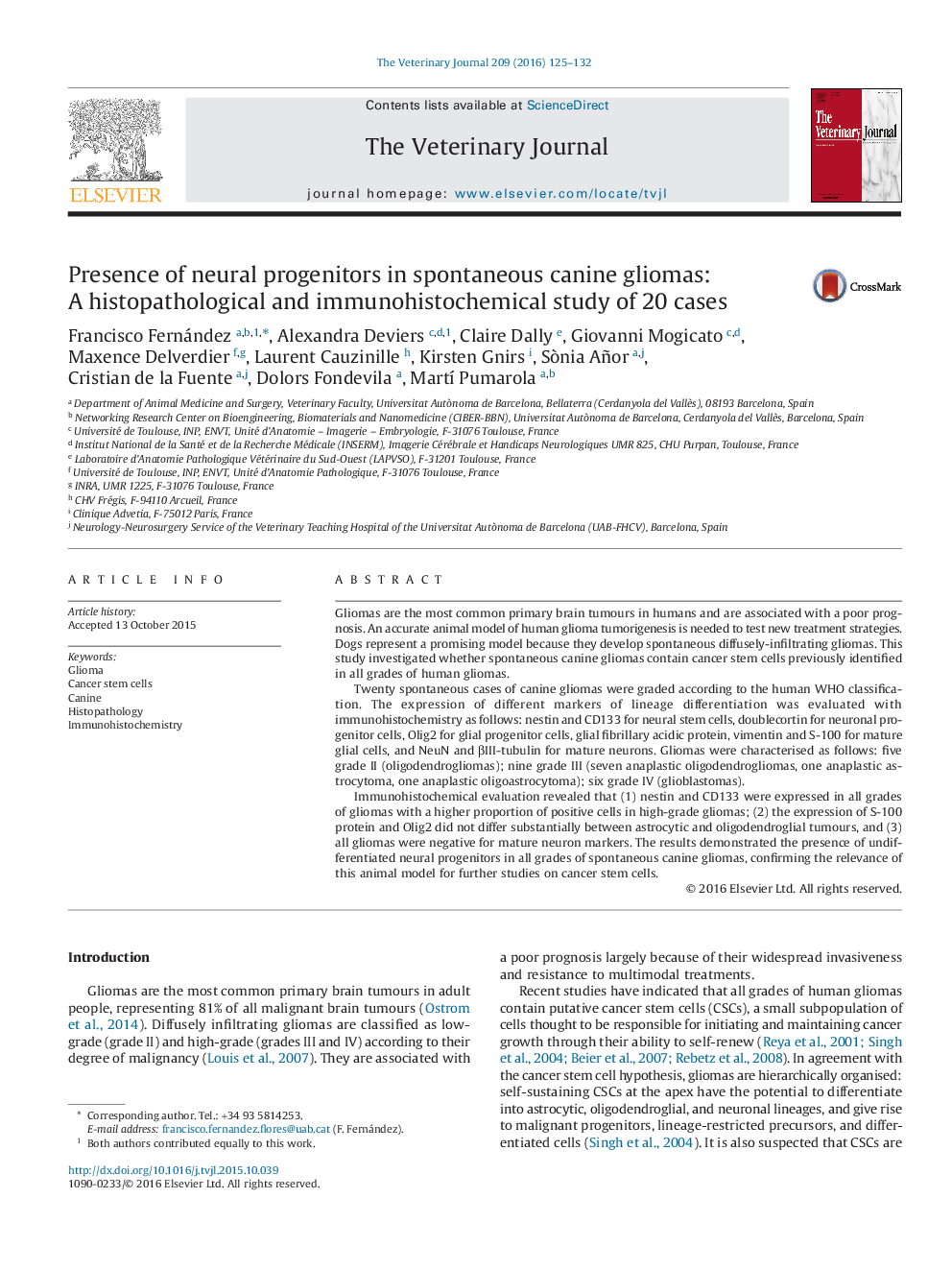| Article ID | Journal | Published Year | Pages | File Type |
|---|---|---|---|---|
| 5797339 | The Veterinary Journal | 2016 | 8 Pages |
â¢Twenty spontaneous canine gliomas have been graded morphologically.â¢Neural progenitors were detected by immunohistochemistry.â¢Detection of neural progenitors correlated with malignancy grade.â¢Canine gliomas show similar immunohistochemical features as in humans.â¢Canine glioma may be used as an animal model for human oncology.
Gliomas are the most common primary brain tumours in humans and are associated with a poor prognosis. An accurate animal model of human glioma tumorigenesis is needed to test new treatment strategies. Dogs represent a promising model because they develop spontaneous diffusely-infiltrating gliomas. This study investigated whether spontaneous canine gliomas contain cancer stem cells previously identified in all grades of human gliomas.Twenty spontaneous cases of canine gliomas were graded according to the human WHO classification. The expression of different markers of lineage differentiation was evaluated with immunohistochemistry as follows: nestin and CD133 for neural stem cells, doublecortin for neuronal progenitor cells, Olig2 for glial progenitor cells, glial fibrillary acidic protein, vimentin and S-100 for mature glial cells, and NeuN and βIII-tubulin for mature neurons. Gliomas were characterised as follows: five grade II (oligodendrogliomas); nine grade III (seven anaplastic oligodendrogliomas, one anaplastic astrocytoma, one anaplastic oligoastrocytoma); six grade IV (glioblastomas).Immunohistochemical evaluation revealed that (1) nestin and CD133 were expressed in all grades of gliomas with a higher proportion of positive cells in high-grade gliomas; (2) the expression of S-100 protein and Olig2 did not differ substantially between astrocytic and oligodendroglial tumours, and (3) all gliomas were negative for mature neuron markers. The results demonstrated the presence of undifferentiated neural progenitors in all grades of spontaneous canine gliomas, confirming the relevance of this animal model for further studies on cancer stem cells.
